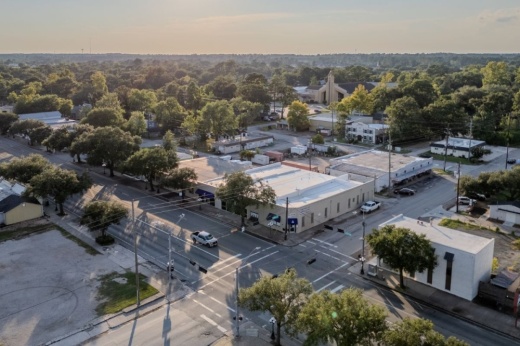The city of Tomball’s newly adopted comprehensive plan serves as a long-term blueprint for managing the city’s growth, guiding development and shaping infrastructure over the next five to 10 years.
The plan reflects community input gathered through surveys and open houses, and focuses on areas such as future land use, economic development and transportation and mobility, per the plan. The last comprehensive plan was adopted in 2019, and the new plan was approved this June.
City leaders said the document will be used as a policy guide to inform rezoning, infrastructure investments and future development decisions.
“It’s not just a vision—it’s a tool,” former Assistant City Manager Jessica Rogers said.
In a nutshell
As Tomball grows, transportation remains one of the city’s biggest challenges and opportunities, Mayor Lori Klein Quinn said. The new comprehensive plan has an updated Major Thoroughfare Plan, with 11 proposed road connections and extensions designed to reduce congestion, improve safety and enhance connectivity.
The plan’s transportation element builds on public feedback, Rogers said.
“People consistently told us they wanted better flow through downtown and safer options for walking and biking,” she said.
The thoroughfare plan identifies high-priority corridors, including FM 2920, Business 249 and Boudreaux Road.
North Houston Association President Marlisa Briggs said Tomball’s planning helps strengthen the region’s mobility network.
“When [the Houston-Galveston Area Council] produces its long-range plans, they seek out things like [the comprehensive plan],” she said. “So it not only helps Tomball locally, but it also helps regionally.”
Quinn said mobility improvements are about maintaining access and identity.
Note: The map below is an estimation of the proposed roads’ routes, and right of way refers to the land over which a public road is built.
- Major arterial: typically 100 feet of right of way; designed to manage high-speed vehicular traffic
- Minor arterial: typically 80 feet of right of way; distributes traffic from major arterials to collector streets and often has lower speed limits than major arterials
- Collector: typically 70 feet of right of way; moves traffic from local streets to the arterial network
Put in perspective
Traffic in Tomball has risen as new development fills in around the city. Average daily counts jumped 73% along Hwy. 249 south of FM 2920 between 2021 and 2024, with smaller increases across FM 2920 and Business 249, according to the Texas Department of Transportation.
Those numbers reflect Tomball’s fast-paced growth, Rogers said. Between 2010-2022, the city’s population rose 26.8%, according to city data.
“The city has seen increased traffic ... as new neighborhoods and businesses open,” she said.
Briggs said that’s a regional trend.
“Improved transportation in arterials will bring people to areas that prior had not been accessible,” Briggs said.Also of note
Beyond roads, the comprehensive plan lays out a vision for mobility that includes more than cars—expanding sidewalks, trail networks and alternative transit. One focus is a potential trolley connecting Old Town, the Depot Plaza and nearby parking areas. However, Quinn said her vision is to connect the whole town.
The city has explored partnerships through the Tomball Economic Development Corp. to apply for grant funding from the Houston-Galveston Area Council for a trolley feasibility study, Quinn said.
Tomball’s multimodal approach aligns with regional goals, Briggs said.
“As an area gets more and more congested—and especially Tomball, with events like German Fest bringing in 40,000 visitors—that is huge,” Briggs said. “Anytime you have that many people in one space, if you can offer something like a circulator or a trolley system to help move those people around safely and efficiently, it’s always a benefit.”
Quinn said she envisions a trolley as part of the city’s small-town charm and economic strategy.
“It’s a fun, practical way to move people without adding traffic,” she said. “A trolley would tie together our festivals, shops and restaurants in a way that really fits Tomball’s identity.”
Residents supported these options throughout the planning process, Community Development Director Craig Meyers said.
“People wanted to feel safe walking to dinner or festivals,” he said. “The more connected our sidewalks and trails are, the more people will use them.”
What they’re saying
- “Transportation is one of those things that touches everything else—our economy, our safety and even our sense of community.” —Lori Klein Quinn, Tomball mayor
- “The [FM 2920] widening is absolutely necessary. ... The traffic will continue to be able to flow throughout the area, because it has gotten so popular, and that is the main arterial through Tomball.” —Marlisa Briggs, North Houston Association president
The city is investing heavily in its road network, with several multimillion-dollar projects under design or construction. Current funding includes $1.3 million for the M118 drainage project near Lizzie Lane and $2 million for Carrell and Lovett Street drainage improvements, alongside TxDOT’s $30 million FM 2920 reconstruction project, City Manager David Esquivel said.
Construction on FM 2920 is expected to begin in January 2029 and be completed in January 2031, Quinn said.
Additional projects are being coordinated with Harris County Precinct 3 and regional partners to improve intersections, traffic flow and flood resilience. Rogers said the city’s new budget aligns these investments with the comprehensive plan’s goals.
“It’s about making sure we’re not just growing—we’re growing smart,” she said.Reporter Julianna Washburn contributed to this story.





